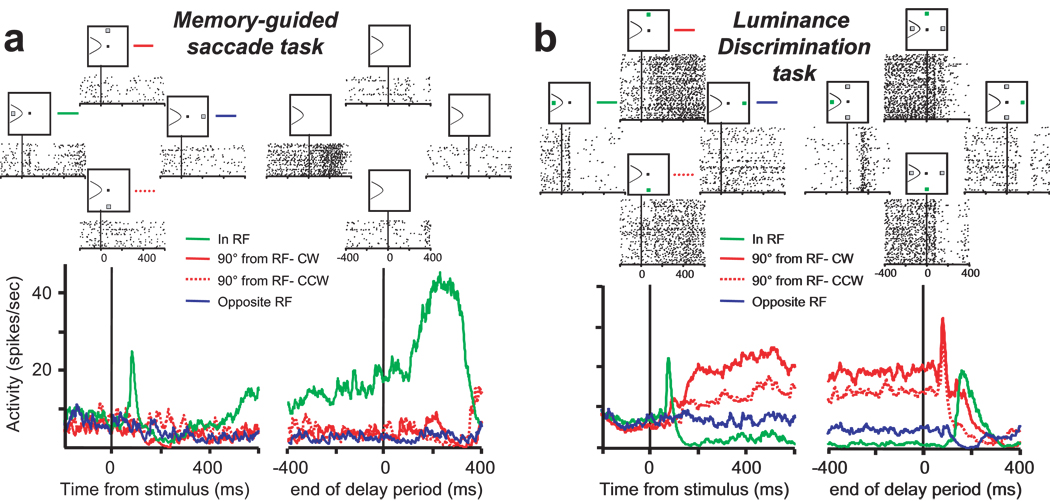Figure 2.
A neuron that exhibits cognitively-driven spatially selective activity - Type I. (a) Activity of a visuomovement neuron recorded during the memory-guided saccade task aligned on the time of target presentation (left) and the time of the ‘go’ cue, which marks the end of the delay period (right). The upper rasters show the spike times on single trials and the lower spike density functions plot the average firing rate separately for the 4 stimulus locations. The green lines plot the activity when the target was presented in the response field (In RF). The red lines plot the activity when the target was presented at the stimulus location 90° CW (solid red) and 90° CCW (dotted red) from the RF. The blue line plots the activity when the target was presented at the stimulus location opposite the RF (Opposite RF). (b) Activity of the same neuron recorded during the luminance discrimination task aligned on the time of the presentation of the green cue (left) and the time of the appearance of the luminance stimuli, which marks the end of the delay period (right). The upper rasters and lower spike density functions correspond to the activity on trials in which the green cue stimulus appeared at the same stimulus locations as the flashed target in the memory-guided saccade task. Note the similar initial visual response in the two tasks when the visual stimulus is presented in the RF (green activity traces). This neuron exhibited clear anticipatory activity during the delay period on trials in which the green stimulus informed the monkey that a luminance stimulus will appear in its RF (solid and dotted red activity traces). In contrast, there was no activity modulation on trials in which the green stimulus was presented opposite its RF and informed the monkey that both luminance stimuli will appear outside its RF (blue activity trace).

